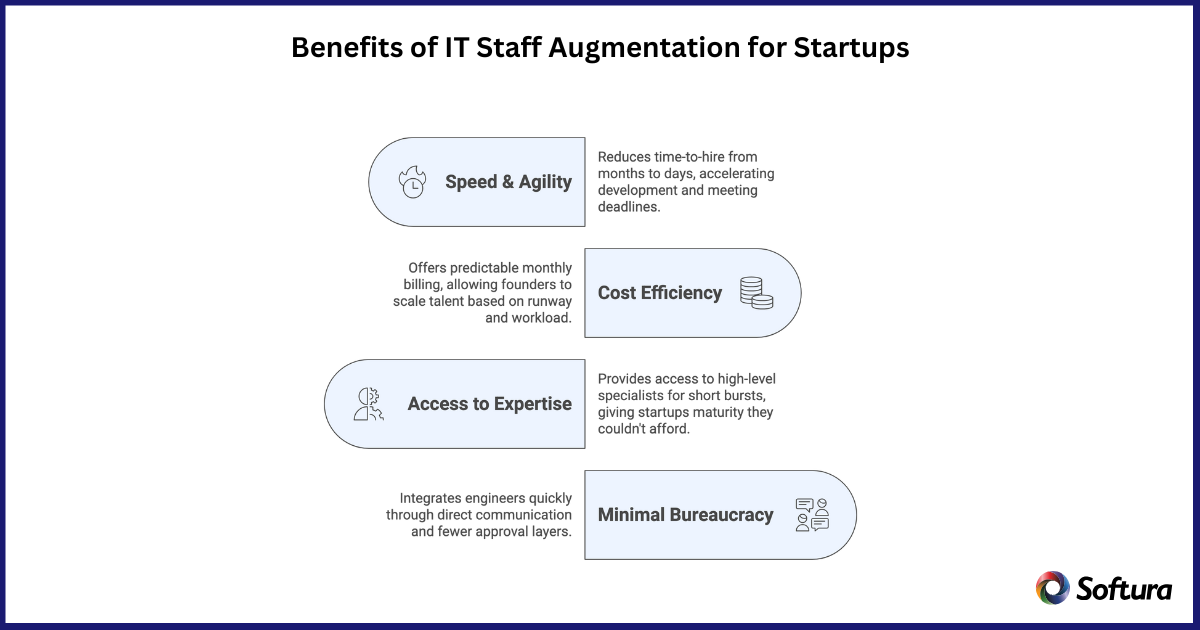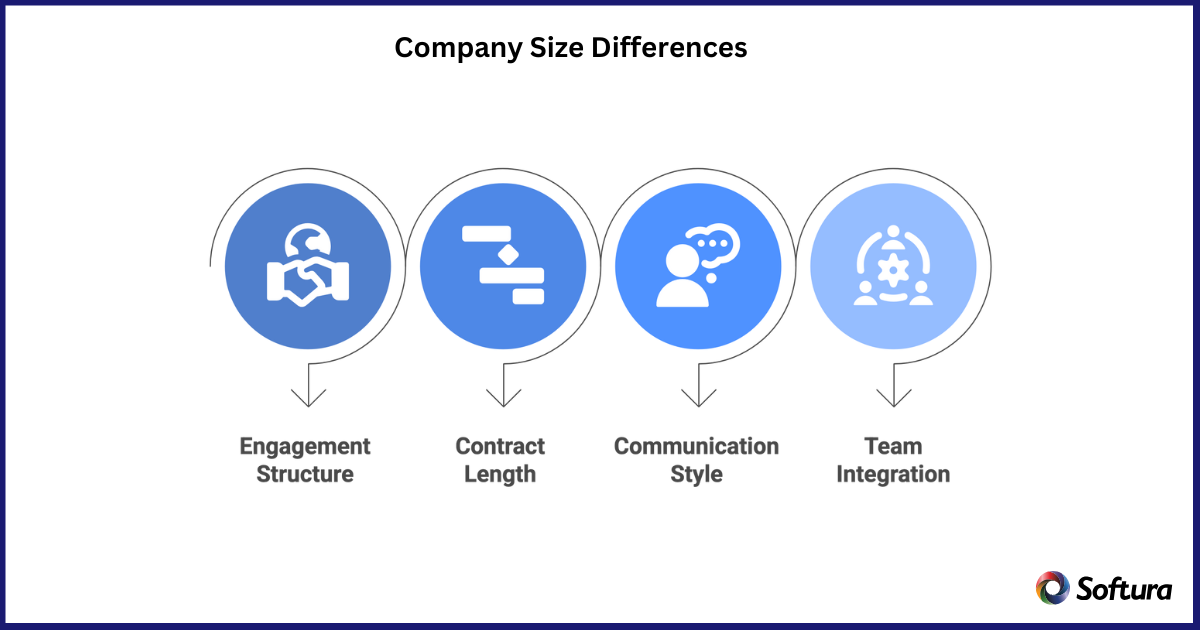"Our integration with the Google Nest smart thermostats through Aidoo Pro represents an unprecedented leap forward for our industry."
- Antonio Mediato, founder and CEO of Airzone.
IT staff augmentation has become one of the most reliable ways for organizations to close skill gaps, accelerate delivery, and scale teams without long-term hiring commitments. But although the model is the same, the way startups use IT staff augmentation is completely different from how enterprises use it.
The reason is simple: startups and enterprises operate in different worlds. One needs speed and cost control. The other needs stability, governance, and specialized talent at scale. After more than 25+ years working with CEOs, CTOs, and CIOs, I’ve seen how mismatching the augmentation strategy with the company’s stage leads to delays, budget waste, and internal friction.
This article breaks down the real differences between IT Staff Augmentation for Startups vs Enterprises, why each group approaches it differently, and how they can get maximum value from the model.
Even though the hiring model is the same, the environment in which these organizations operate is completely different.
They need:
One delayed feature or missed milestone can affect their entire growth trajectory. Staff augmentation becomes a way to keep momentum without overspending.
They prioritize:
They don’t adopt augmentation to “move fast” but to support large initiatives, fill niche skill gaps, and maintain predictable delivery across multiple departments.
"Our integration with the Google Nest smart thermostats through Aidoo Pro represents an unprecedented leap forward for our industry."
- Antonio Mediato, founder and CEO of Airzone.

Staff augmentation is often a lifeline for startups trying to hit timelines with limited internal capacity.
Startups can’t wait 6–8 weeks for full-time hires. Augmented engineers are available in 5–10 days and can usually contribute productively within two weeks. This helps young companies:
This ability to “start building now” is one of the biggest reasons startups choose augmentation over full-time hiring.
Hiring full-time employees means paying for benefits, training, retention, and overhead—costs that early-stage companies can’t always justify. Augmentation offers predictable monthly billing and lets founders scale talent up or down based on runway and workload.
This flexibility keeps burn rate under control without slowing development.
Startups often need high-level specialists for short bursts—architects to set up cloud infrastructure, DevOps experts to fix deployment issues, or senior developers to stabilize core modules.
Instead of committing to full-time salaries, they can bring these experts in for specific phases such as:
This “borrowed expertise” gives startups maturity they couldn’t otherwise afford.
Startup teams generally work informally, with direct communication and fewer approval layers. Augmented engineers integrate quickly because:
This environment cuts ramp-up time significantly and helps external engineers feel like part of the core team from day one.
"By analyzing the data from our connected lights, devices and systems, our goal is to create additional value for our customers through data-enabled services that unlock new capabilities and experiences."
- Harsh Chitale, leader of Philips Lighting’s Professional Business.
Enterprises rely on augmentation for reasons related to scale, complexity, and organizational risk—not just speed.
Enterprise initiatives often involve multiple teams and require niche expertise such as:
These skills aren’t needed permanently, but they are crucial for delivering multi-year projects. Staff augmentation gives enterprises reliable access to this talent without expanding internal headcount.
Enterprises must follow strict security and compliance requirements. Augmented engineers typically go through:
These guardrails maintain consistency and reduce operational risks across cross-functional teams.
Enterprises rarely use a single talent model. They blend:
This multi-sourcing strategy gives them greater flexibility during reorganizations, budget shifts, and program expansions.
Enterprises deal with unpredictable challenges—mergers, seasonal spikes, compliance deadlines, modernization waves, and unexpected turnover. Staff augmentation helps them:
For large organizations, augmentation is an insurance policy that protects delivery continuity.

These differences shape expectations and make it essential for both companies and vendors to align their processes from day one.
A SaaS startup needs to launch an MVP in six weeks to secure investor funding. They augment their team with a senior developer, a UX designer, and a DevOps engineer. Work begins in under 10 days, and the product ships on time.
Why augmentation works here: Speed matters more than structure.
A global manufacturing company is transitioning from a legacy ERP to the cloud. They need 20+ specialists—SAP consultants, QA automation engineers, data migration experts—across 18 months.
Why augmentation works here: Specialized expertise and continuity matter more than short-term agility.
Each type of organization faces challenges, but the root causes differ based on maturity and structure.
Companies transitioning between stages benefit from a hybrid approach—startup-level agility combined with enterprise-level structure. This avoids bottlenecks while maintaining oversight.
The biggest misconception about IT staff augmentation is believing that one model fits everyone. But the needs of a fast-moving startup and a large enterprise are fundamentally different.
Startups succeed with augmentation when they focus on:
Enterprises succeed with augmentation when they focus on:
When companies choose an augmentation model aligned with their stage, they deliver faster, operate more efficiently, and get much stronger ROI from the investment.
Optimize Your Tech Team With the Right Talent Model
Avoid mismatched hires, scaling risks, and delivery delays. Learn which augmentation approach fits your timeline, structure, and budget.